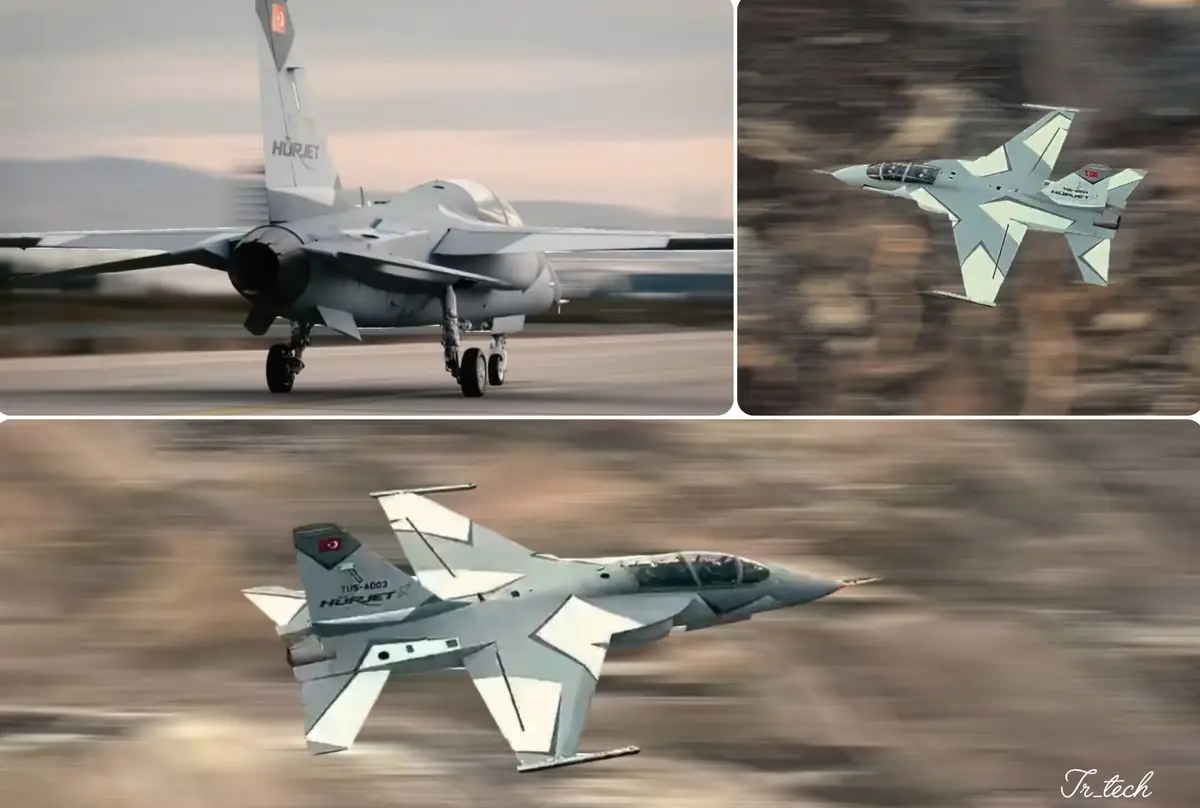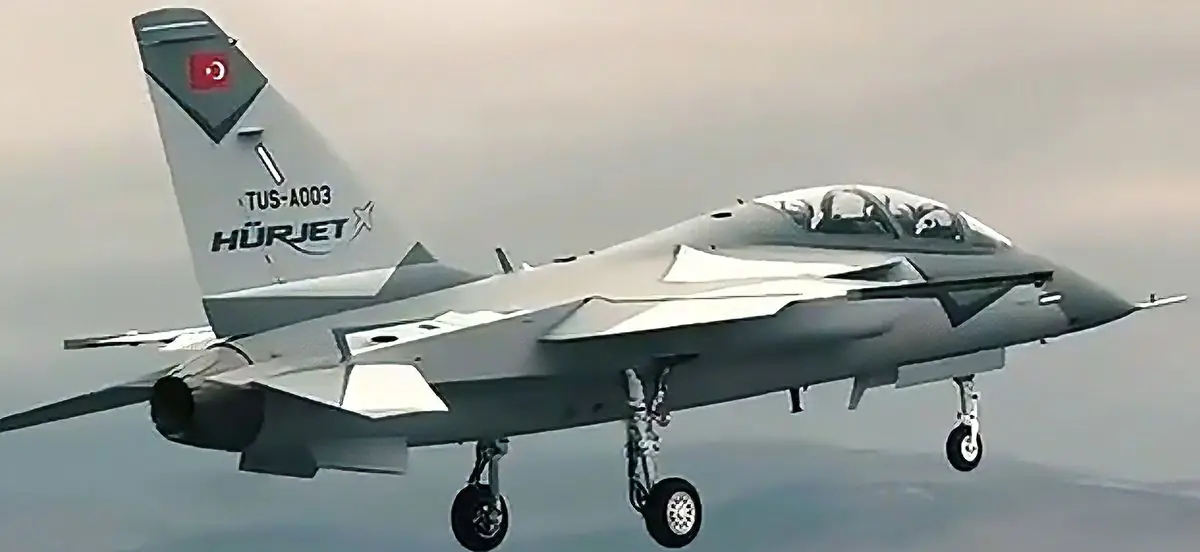The second prototype of Turkey‘s Hurjet aircraft, produced by TUSAŞ (Turkish Aerospace), has completed its latest flight, following a new paint job. In addition to the new colors, the aircraft has undergone several noticeable changes to the airframe design and configuration. These structural adjustments are aimed at enhancing its combat capabilities, making it relevant not only for the Turkish Air Force but also for the competitive market of modern jet trainer aircraft and light fighter jets.

The two-seat, single-engine glider, with the tail number TUS-A003, features a light and dark gray color scheme with angular geometric patterns. The first prototype, in contrast, was spotted in a red-and-white color scheme. It is reported that the second prototype “exceeded the speed of sound,” meaning it reached supersonic speeds, and ascended to an altitude of 45,000 feet, surpassing the first prototype’s performance. It also conducted “various maneuvering tests.”
During its first flight, the aircraft stayed airborne for 26 minutes, reaching an altitude of 10,000 feet and achieving a speed of 370 km/h. Deliveries of the aircraft are planned for 2026, though it remains unclear from the reports whether serial production has already begun. Some sources speculate that it is likely to start in early 2025.
Dalgalan sen de şafaklar gibi ey şanlı hilal! 🇹🇷
HÜRJET’in ikinci prototipi yeni boyasıyla gökyüzüne havalandı! ✈️ pic.twitter.com/ZRWbxlBmkH
— Türk Havacılık Uzay Sanayii (@TUSAS_TR) November 21, 2024
The video shows the new paint scheme being applied in the workshop and the aircraft leaving the hangar before takeoff. The three most noticeable differences between the first and the new second prototype are the design of the air intakes, which on the latter are round on one side and hemispherical in shape. It also has missile launchers on the edges of the wings and a slightly larger nose fairing. This may have been necessary to accommodate the MURAD AESA (Active Phased Array) radar. The nose is also more noticeably sloped downward.
These innovations are aimed at enhancing both the aircraft’s offensive and potentially defensive capabilities. The first international customer for the Hurjet could be Spain, as the country looks to replace its aging fleet of Northrop SF-5M Freedom Fighters. In early August, the Hurjet prototype was sent to Torrejon Air Base near Madrid for evaluation. Another potential buyer for the aircraft could be Egypt, indicating growing interest in this new Turkish jet on the international market.

Last year, the CEO of TAI (Turkish Aerospace Industries), Mehmet Kotil, stated that there are plans to produce up to 400 Hurjet aircraft over the next two decades, with 100 units destined for the Turkish Air Force and 300 for export to various customers by the 2030s. Currently, the Turkish Air Force has ordered 17 Hurjet trainer aircraft.
Source: theaviationist








